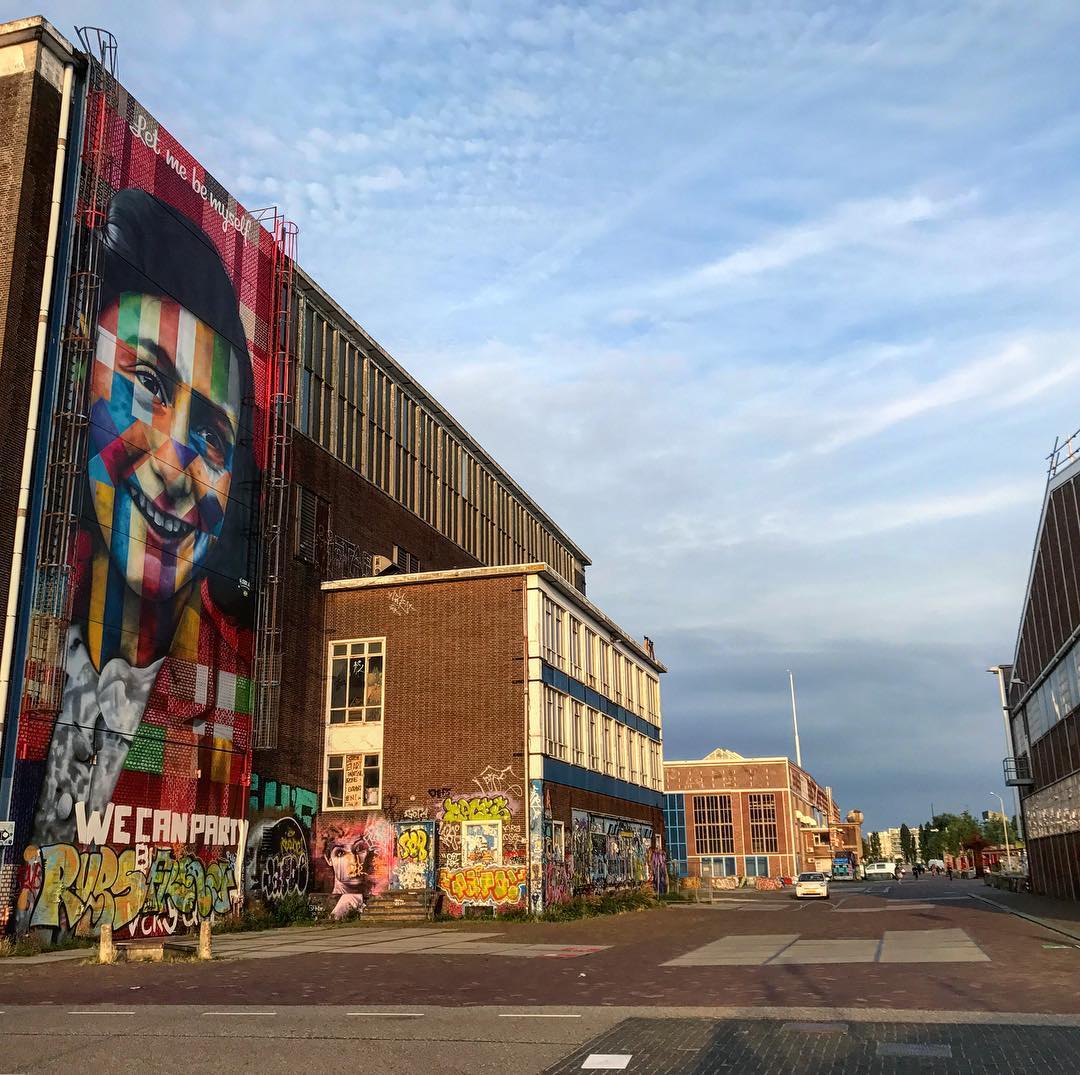
You might be wondering whether Amsterdam has anything else other than museums, canals, bikes & coffeeshops.
Spend a few hours at NDSM and surprises await you…
1 Free ferry trip
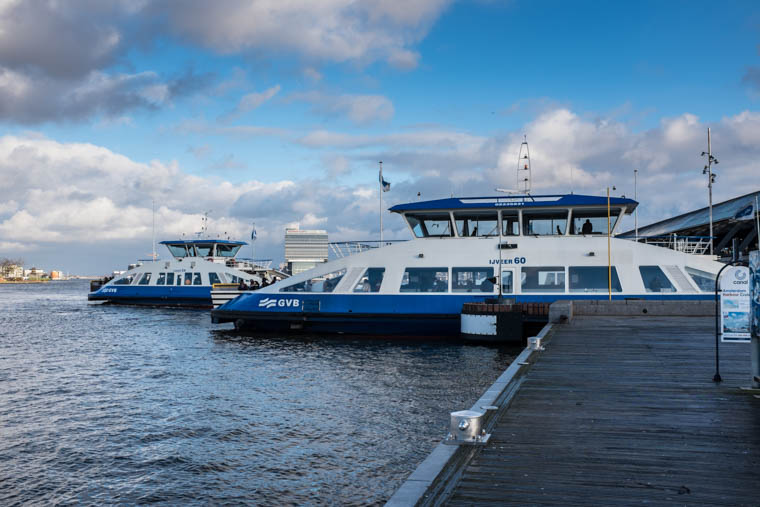
Free ferry connections across the IJ river are available for foot passengers, cyclists and moped riders. The blue-and-white ferries depart from the back of Amsterdam Central train station and run all day & night. The boat trip from Central station to NDSM wharf takes about 15 minutes. Along the way, you will enjoy magnificent views of the river Ij, modern architecture of Westerdok and the Eye Film Museum.
2 Abandoned Russian submarine
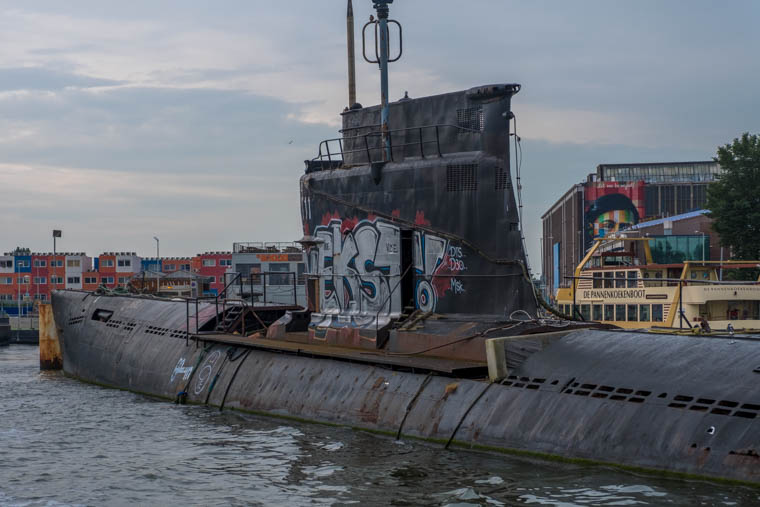
The 90-meter-long Russian Foxtrot B-80 submarine docked in Amsterdam North’s NDSM harbour was built in Riga, Latvia back in 1956. It was brought to Amsterdam from Den Helder in 2002 with the intention to use it as a party venue. It now belongs to a Belgian company, and the authorities recently requested that the submarine should be removed.
3 Botel – floating hotel
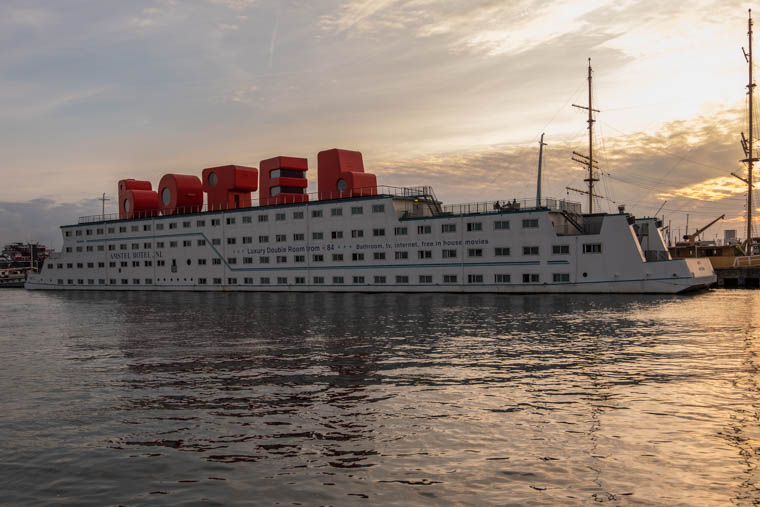
Botel is a modern floating 3-star hotel and has been rated for the best value in Amsterdam!
The
Amstel Botel called “Adie” is docked at the NDSM Wharf in Amsterdam Noord, at the NDSM-Pier 3. This ship was previously moored in the Oosterdok near the floating Chinese restaurant Sea Palace. Since 2008, it’s been docked at the NDSM site. The floating hotel offers 175 individual rooms with a beautiful view of the river Ij.
Five new unique suites have on on top of the former river cruise ship. The rooms have the shape of letters that together form the word ‘botel’ and are designed to resemble bright red chimneys from a distance. In the suites, you’ll find unique features such as a half-pipe for skaters, the smallest cinema in the Netherlands and a ‘captain’s room’.
4 Shipping containers – housing for students
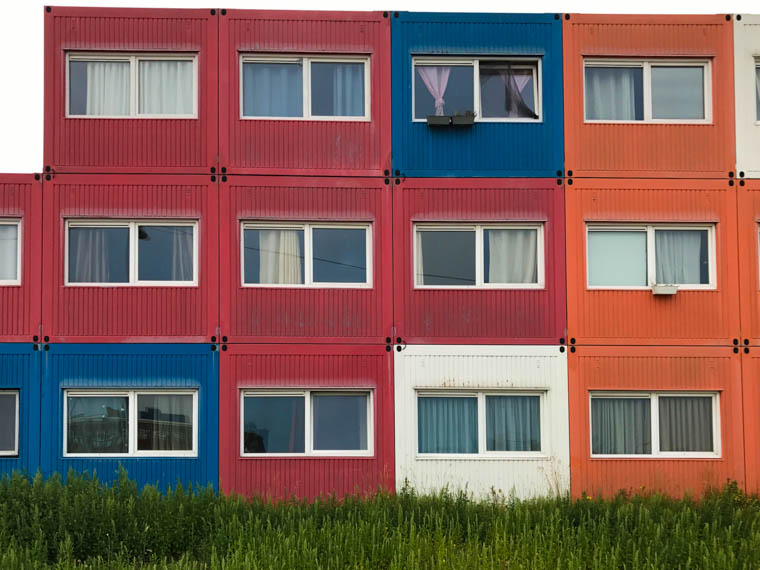
The shortage of student housing in Amsterdam led to the innovative idea of re-purposing shipping containers into modular accommodation units. A production line in China is used and supplies around 40 units per week. The units known as “
Keetwonen” have been a big success and become one of the most popular student residences in Amsterdam.
5 Faralda – Hotel on a crane
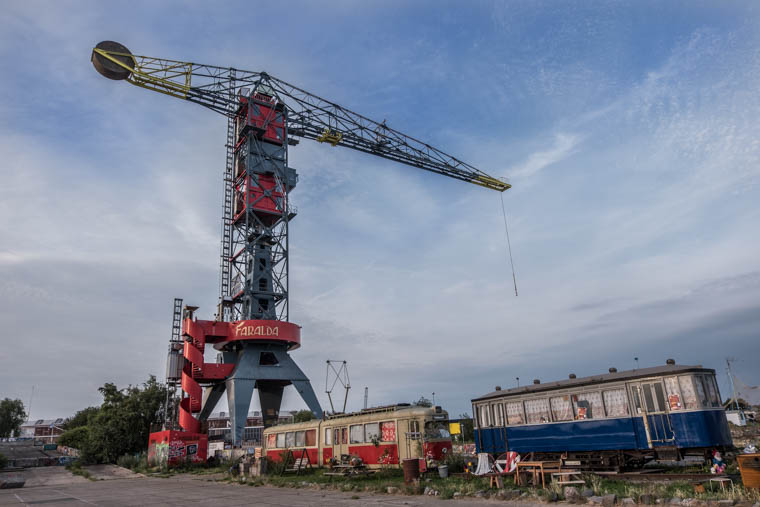
Crane Hotel Faralda is an iconic and a world famous landmark with 3 five-star suites and a Panoramic lounge. It is widely known by the rich and famous: DJs, VIPs, CEOs and Royals.
The crane is named after a beautiful and sensual Dutch lady living in the 40’s. She was an ambitious and determined character and able to realise the impossible. The conversion of the crane to a hotel was also an immense challenge and construction costs eventually amounted to more than € 3,150,000 during the restoration from 2011-2015
Two panorama elevators provide access right into the top of the crane. At 15 metres, the Faralda Crane even has a professional TV Studio at 15 meters. The crane also has a wind vane mode allowing it to move slowly in the wind. This means that the view from the window frequently changes.
Those looking for an adrenaline rush may jump off the 50-meter high crane! The
rope jump has a swing of at least 90 meters and a free fall of tens of meters. One rope jump costs € 85,– and is monitored by qualified and certified instructors.
6 Street Art
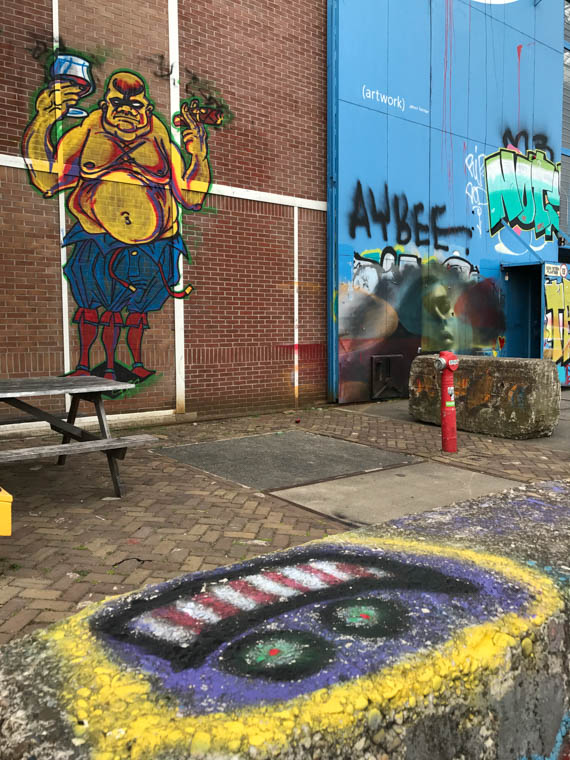
Examples of street art have always been visible on buildings at NDSM.
In June 2018, the worlds biggest street art museum will open at NDSM. It will include more than 100 works by leading street artists from all over the world.
The museum will be located at a repurposed welding warehouse covering a surface area of more than 7,000 m2. The facade of the future museum is covered by a 24-meter high portrait of Anne Frank by world-famous Brazilian artist Eduardo Kobra. It has already made a huge impact and been shared widely on social media.
7 Old Amsterdam Trams
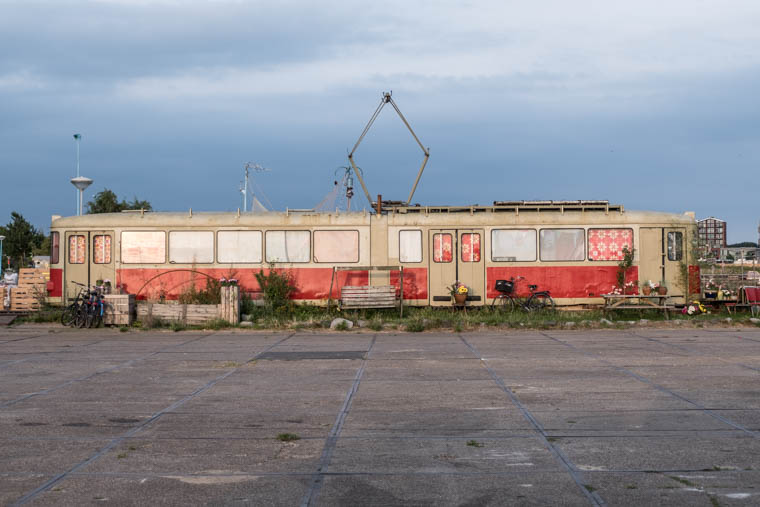
One spot at NDSM is known as Trammeland and is home to 2 old trams.
One of the teams was recently set alight in an arson attack. A charity which collects old trams cane to the rescue and offered a replacement tram built in 1918.
8 GeWoonboot – 100% Sustainable House Boat
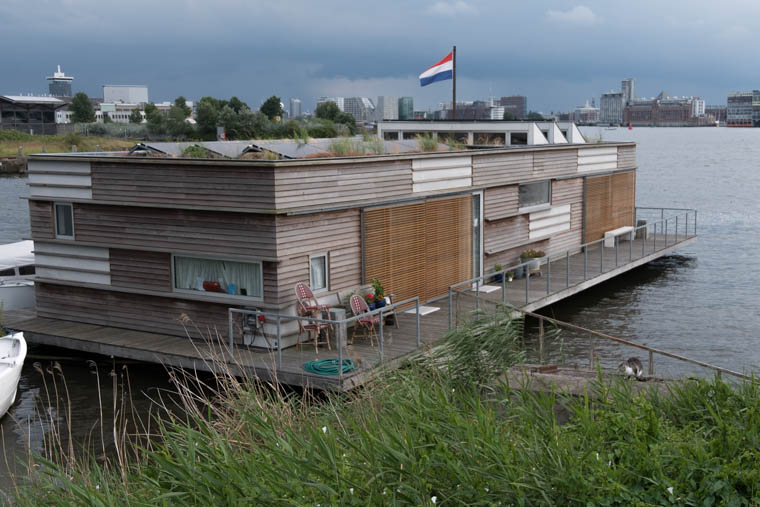
The geWoonboot is an environmentally friendly houseboat which is used as a meeting and training facility. It’s located near the Noorderlicht cafe. The boat creates its own energy and water supply by making maximum use of natural resources: the sun, river water and rainwater.
9 Quirky Cafe – Noorderlicht
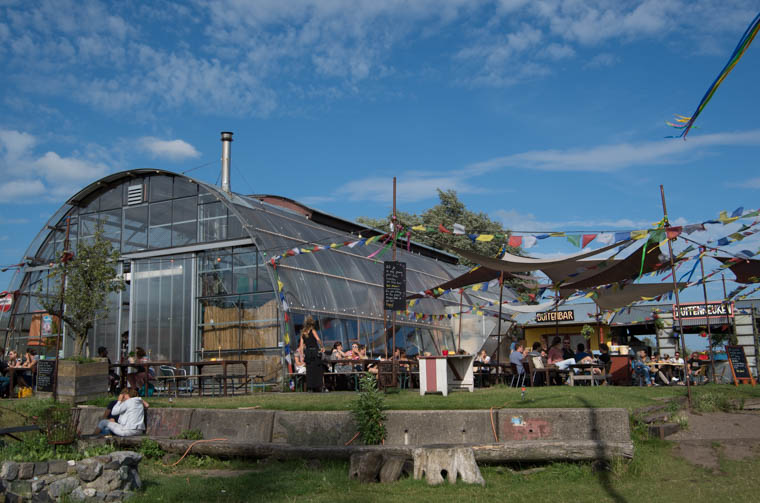
Noorderlicht (Northern Light) is housed in a vast half-pipe greenhouse structure. This is probably one of the most unique venues in Amsterdam. It is filled with colourful, mismatched furniture and a bohemian crowd.
The waterfront beer garden is decorated with unusual sculptures has excellent views over the Ij and Amsterdam Central Station.
On weekends, there is live music, and from time to time the Noorderlicht hosts festivals.
10 City Beach Cafe – Pllek
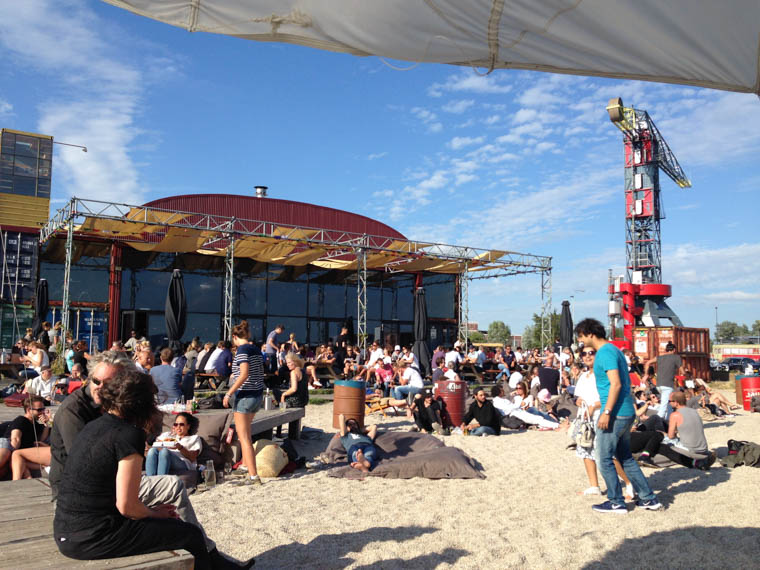
Pllek beach bar has a man-made industrial feel An artificial beach with panoramic views of IJ River. Constructed from old shipping containers and recycled materials gives the cafe a homely organic feel.
The sand isn’t the kind that you can walk barefoot on – it’s more like gravel. There are plenty of beanbags and loungers to relax on and watch the ships pass by.
The food on offer gives vegetarians and vegans a good choice.
Pllek offers live music, international films, yoga lessons, art exhibitions, workshops, mini-festivals and more!
11 Radio Veronica Ship
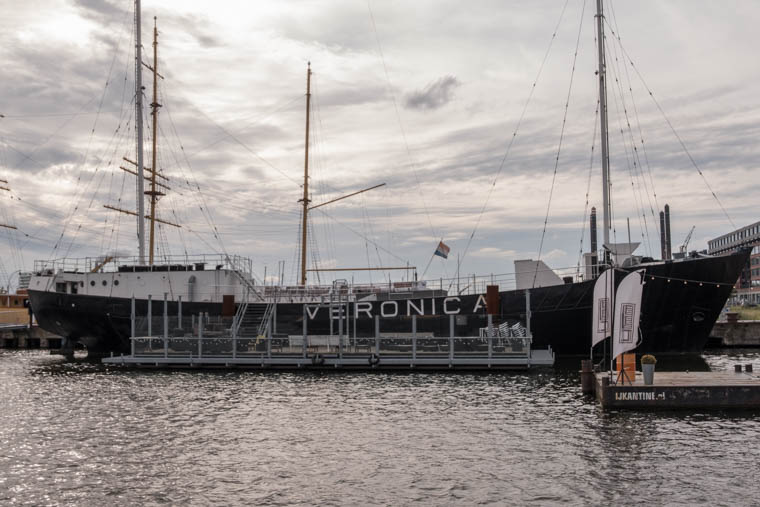
Radio Veronica was an offshore radio station that began broadcasting in 1960. It broadcast from offshore until 1974. Between 1964 and 1974 broadcasts were transmitted from the ship docked at NDSM. The name Veronica comes from the Poem “Het Zwarte Schaap Veronica” — The Black Sheep Veronica.
The ship is now for functions as a trendy nightclub/restaurant with terrace.
12 Pollux – Sailing Ship Restaurant
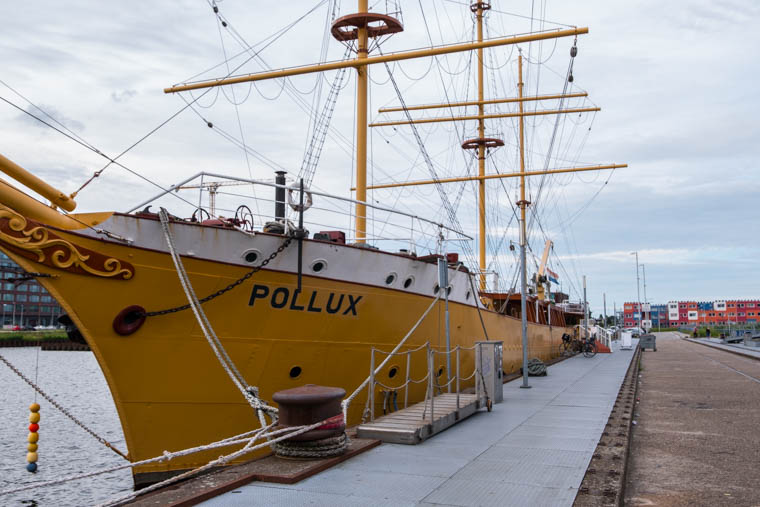
This beautiful ship currently serves as a café and restaurant. Moored on the other side of the Botel, it was initially used to train sailors who wanted a job with the merchant navy.
13 Creative Artistic Hub
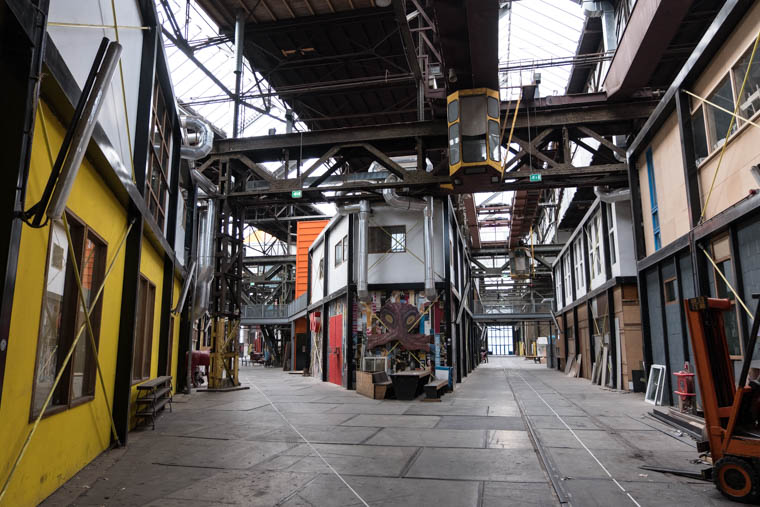
NDSM wharf has been a creative hothouse since the 90s when the shipbuilding came to an end. In 2000, a group of artists, theatre people, skaters and architects founded an organisation called “Kinetisch Noord“. They submitted a proposal to the local council for redeveloping the shipyard to create the largest gathering of artistic talent in the Netherlands.
In recent years, the NDSM site has increasingly become a hip location for festivals and other creative events. The art project Sexyland is one example of this. Every day, a new creative takes over the old canteen close to the ferry and offers a new programme. A weekly membership card is available for 2.50 Euros.
Many of the old buildings that were in use for shipbuilding are still there. The giant shipyard is an incubator for creative enterprises where artists make use of shipping containers to house their work.
14 Ij kantine – Contemporary Family Friendly Restaurant

The Ij Kantine building was constructed in 1957 for the NDSM shipbuilders. It served as offices, an assembly hall, and later as a cafeteria for the shipyard workers.
In the 1980s the shipyard went bankrupt due to a reduction in demand. Thousands of people became unemployed. The association for jobless shipbuilders was established and used the building to socialise. The building became known as the Baanderij.
The IJ-kantine on the ground floor with the upper levels being used for offices. The restaurant is open daily for breakfast lunch, dinner and also high tea
It’s a family-friendly restaurant serving a children’s menu. It has a dedicated play area with various toys and books. On Sunday afternoons, the staff at the IJ-kantine organise craft sessions for the kids. During summer there is a huge sandpit at the side of the terrace.
15 Home to MTV – You might see someone famous!
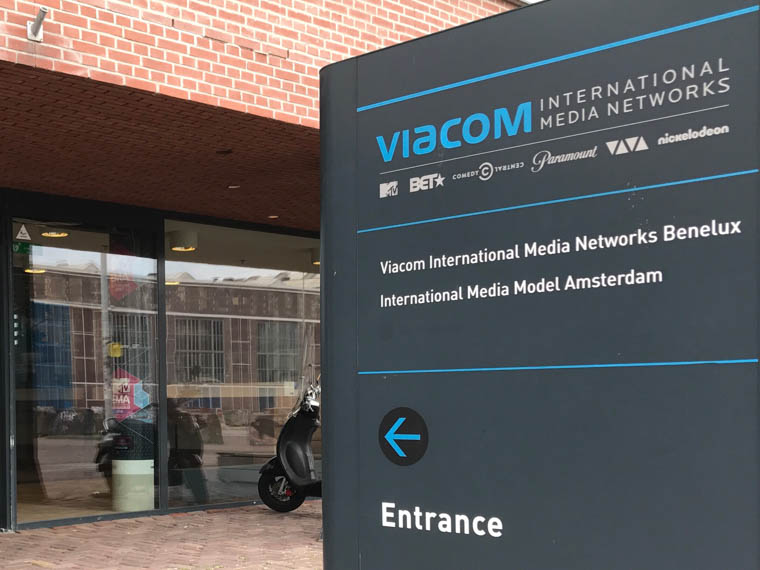
16 Exhibitions & Festivals – there is a Glastonbury feel about NDSM

17 Examples of Urban Decay & Renewal
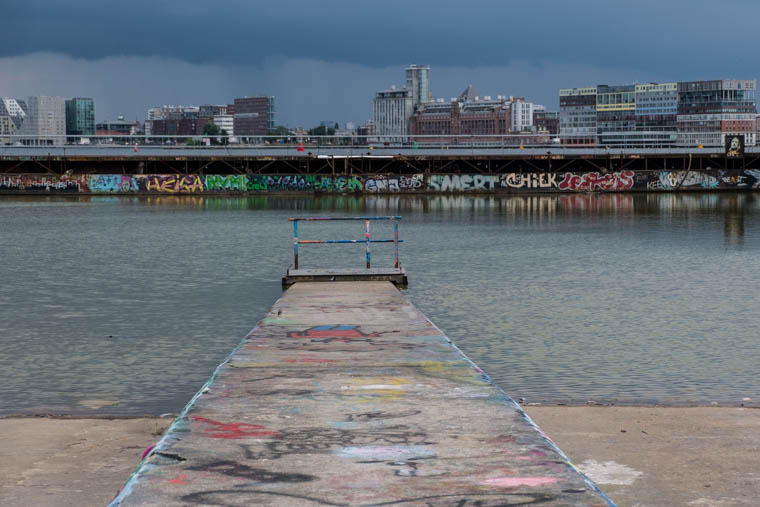
Urban decay set in as a result of the shipyard recession. This part of the Amsterdam fell into disrepair with boarded up and abandoned buildings. This was not unique to Amsterdam, as other European port cities also experienced a decline.
The scarcity of undeveloped land was a driving factor for regeneration projects which began to transform these cities. In addition to NDSM, the Clyde Waterfront Regeneration in Glasgow, Canary Wharf in London and Cardiff Bay also benefited from investment & development projects.

















